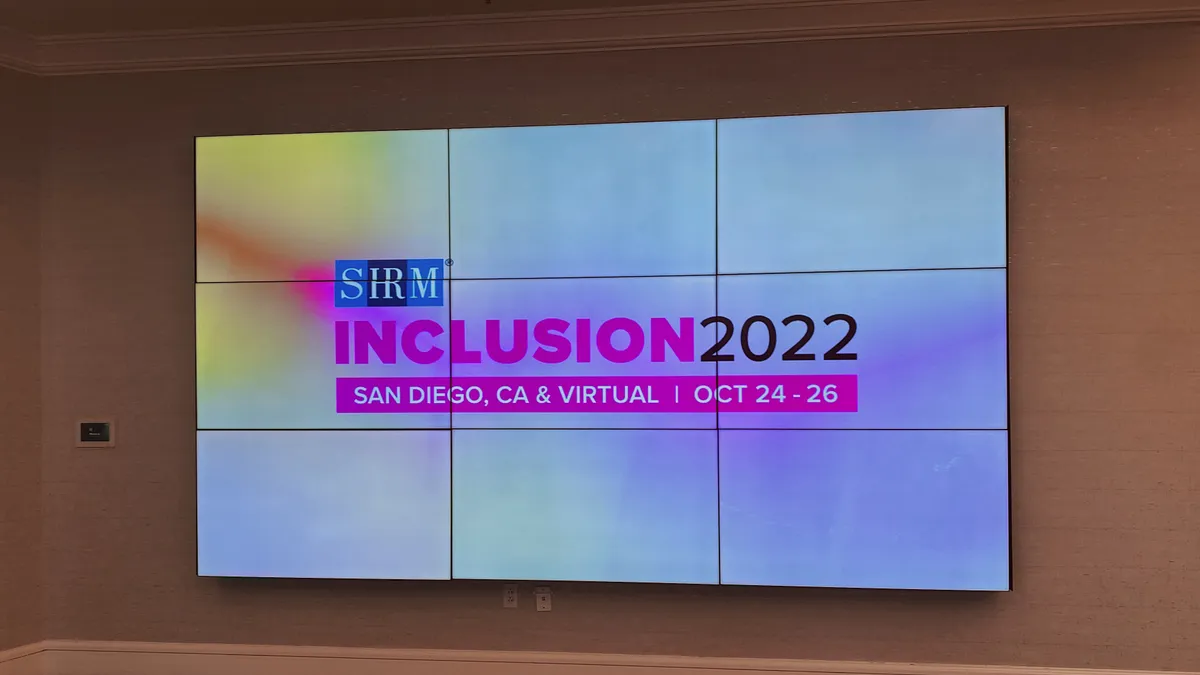For Starla Scott, the workplace was the final frontier. She had been going through life disconnected from the birth gender assigned to her before coming out as transgender at the age of 31.
"I joined PayPal knowing in advance that they had a very good health care plan. So my goal was to transition. I didn't know how to do it though," Scott told HR Dive.
She went through "all aspects of the social transition from male to female gender outside of work," Ryan Gutterson, the HR business partner of Scott's department at the time, wrote for Glassdoor. But she was still switching her identity to come to work.
Gutterson said he knew he wanted to be as supportive as possible, but he did not know what kinds of support Scott needed or how to navigate internal company systems for a gender and name change.
"The thing that was really foremost in my mind, going through that process, was really wanting Starla to ... have as much direct control and influence over what that process would look like as possible," Gutterson told HR Dive.
Gutterson's approach allowed Scott to comfortably open up about her concerns and identify areas with which she'd need help.
"I just approached them about my transition very openly," Scott said. "I felt very comfortable during the entire process because I felt like Ryan was always in contact with me and always very considerate."
PayPal, like most companies, didn't have a playbook in place for gender transition. Gutterson noted there was an employee in a different company office that transitioned about a year earlier with "markedly less support." He said he needed to educate himself on the topic and figure out a way to handle matters ranging from compliance to culture within PayPal's chief technology officer organization, and the company writ large.
Getting informed
The first step for Gutterson was building a knowledge base on the subject and trusting Scott's guidance.
"I made what was a very accurate assumption that Starla was more close to that experience and knew more about what needed to be looked at than I did," Gutterson said. He searched online to read articles and research about the experiences of transgender people, including materials from the Human Rights Campaign. Gutterson also spoke to the employee who transitioned with less support to get her feedback.
"I reached out and asked her if she'd be willing to talk to me about what that experience was like, what some additional things were that I could keep in mind ... and would she be open to talking to Starla," he said.
The research helped him gain an understanding of what people in transition might need at work, and also helped Gutterson communicate necessary information to Scott's manager, senior management and other internal stakeholders.
"I tried to go through as much of that as I could to understand what other people's experiences have been like," he said, "and what were some of the things we would want to keep in mind."
Having a plan
After doing his background research, Gutterson knew that Scott needed to be heavily involved in putting any plan together. They considered a range of questions. Who did they need to tell, and how? What kind of information could go out in an email versus a team meeting? If a colleague had a question, what would be the best way to share it?
"I think it really came down to kind of putting our heads together," Gutterson said. "Starla really came through with a lot of those foundational things [she] wanted to make sure people were aware of. And I think where hopefully I was able to help was thinking through what is the timing of that … who do we talk to first and in what order to produce the right kind of support for you in the environment?"
It was not always simple and straightforward. In fact, Scott noticed that Gutterson was hesitant to say everything on his mind out of fear of making her feel uncomfortable.
"I very much appreciated it," she said, but it was getting in the way, and she felt a need to encourage him to speak more freely. "I felt like initially, it was a little bit of a hindrance because there's discomfort, but it helps me break some of that ice."
The experience informed how Scott wanted to approach conversations with her colleagues. She said she wanted to encourage them to ask any questions they had.
"I think that people should be given the space to process that and ask questions. I think that's one of the biggest problems right now is that there's not a space for other people to ask questions, because not enough people stand up to let people ask questions," she said.
Gutterson credits Scott's openness and desire to connect with colleagues for making the process run smoother.
"I actually had people ask me questions," Scott said, "because in my coming out, I explicitly said that I was very open to people talking to me. So I had other employees that I worked with before actually asking questions, and they had a better understanding of what they didn't know."
Additionally, feeling comfortable in being her true self at work allowed Starla to navigate her transition with less to worry about than many others in the same situation.
"You don't know how your body's gonna react ... how your family members are gonna react ... there's a very long list of variables," she said. "But work is a pretty big one. Because if you don't have stability in your life, you're not going to be able to transition. So if your workplace is open and accepting of this, that's a huge stressor off of you."
Scott said that the "overall majority of people were very accepting," and especially credits HR and management for their "total acceptance."
"I had one issue with one employee, but it is what it is," she said.
A lesson in logistics
Ultimately, Gutterson and Scott landed on a "change management plan for Starla's transition in the workplace," Gutterson said that started with outreach to Scott's colleagues and manager. Gutterson had an in-person conversation with Scott's manager, then a team conversation with the manager and team followed up immediately by an email from the leader of the organization.
After the communication component, their next priority was updating Scott's name in the company's system.
"I think this is an area where PayPal is still trying to figure things out," Gutterson said. "In [the company's HRIS], there are two different versions of your name in the workday system, there is a sort of preferred name, and then there is a legal name. Any employee can change the preferred name, the legal name you actually have to go through a process to legally change your name and provide documentation to that."
Scott called it one of the largest pain points, logistically speaking, of her transition.
"It just takes so long to change that everywhere. I mean, I'm almost three years into my transition and I still don't have my name change everywhere," she said.
Eventually, through advocacy from Scott and PayPal's LGBTQ employee resource group, most systems at the company now use the preferred name in the system instead of the legal name.
Gutterson described Starla's attitude as "selfless" and "courageous" for the way she was open to speaking about anything and prioritized her teammates. This included her willingness to allow her personal story to be shared with a broader audience. Scott said she hopes this will help companies do a better job of transgender inclusion and also maybe motivate people of all kinds to be honest with themselves and be true to who they are, even at work.
"I find this is so important to be an advocate because there's so many people who don't have the ability, they don't have a voice," Scott said. "To me it feels wrong to not try to make a difference and to not put the effort for people to understand, because it just takes a little bit of work."



















